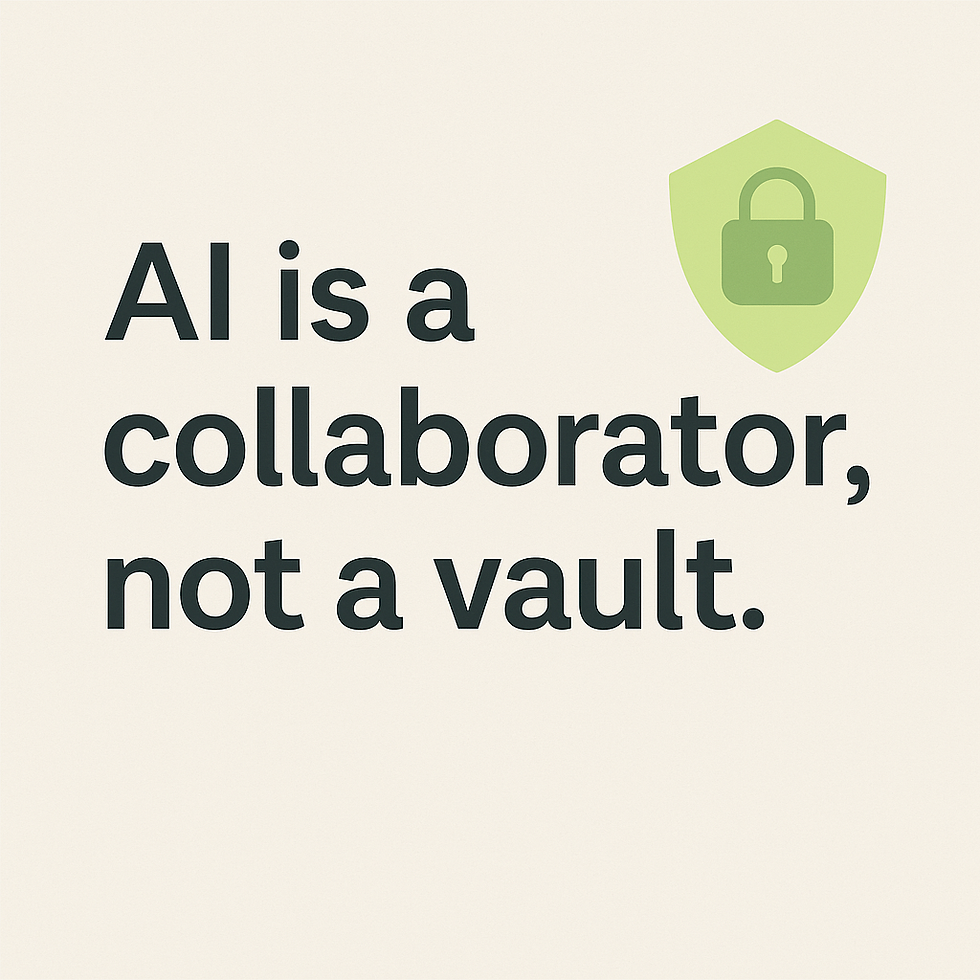The Dog & Pony Show of AI in CRM: What No One’s Talking About
- Jennifer Leonard
- Jun 24
- 4 min read

AI tools for CRM and marketing personalization are everywhere. There are legacy CRM providers rolling out AI-powered features, and newer companies offering shiny new AI tools designed to integrate with your customer database.
You’ve seen the flashy demos. You’ve sat through the dog and pony shows:
Lead scoring!
Automated personalization!
Real-time insights!
You walk away thinking, “This is the ideal MarTech stack. It’s going to help us strengthen engagement and grow our business.”
Maybe.
But for many teams, the reality looks very different.
AI in CRM: The Show vs. The Reality
The promise looks perfect on the surface, but what vendors show doesn’t always reflect what internal teams actually face.
What CRM and AI vendors showcase:
Clean, beautiful dashboards
Seamless integrations
Fully trained AI models delivering immediate insights
What real marketing and ops teams experience:
Inaccessible or fragmented customer data
Disconnected tools that don’t speak to each other
Unclear field ownership, confusing taxonomy, inconsistent definitions
Did you know that 70% of CRM and AI tool rollouts underperform due to data quality issues?
What starts out as excitement often leaves marketers feeling confused, frustrated, and stuck.
The Real Blocker to AI-Powered Marketing: CRM Data Quality
56% of teams say data is the main blocker for AI adoption.
So what are they doing about it?
Bad data is the elephant in the room, but no one wants to talk about it.
Why? Because data isn’t sexy. It’s nerdy. It’s tedious. It’s the thing on your to-do list you never quite get to.
But here’s the truth: when done right, data becomes your biggest competitive advantage.
Great data unlocks:
Customer insight
Predictive behavior modeling
Scalable, sustainable personalization
Higher-performing marketing campaigns
What AI in CRM Actually Needs to Succeed
AI success relies on:
Clear, consistently labeled fields
Standardized formatting across platforms
Reliable historical patterns and engagement signals
But most organizations still lack:
A usable, centralized data dictionary
A single, complete view of the customer
Confidence in their audience segmentation
Clean Data Is Non-Negotiable — But It’s Not the Whole Story
Even after teams invest in unifying and cleaning their data, 47% still say their AI implementations fall short.
That doesn’t mean cleanup isn’t working — it means it’s just one piece of the puzzle.
Without a shared understanding of what the data means, how it’s used, and where it fits in the customer journey, even the cleanest data can go underutilized.
Clean data is the foundation. But to see real AI impact, you also need clarity, context, and cross-functional alignment.
A Real Example from a Personalization Initiative
I once participated in a personalization initiative with a global tech client. Every team showed up: product, creative, data science, marketing.
We had:
Agile pods in place
Strong leadership alignment
A clear vision for personalized, scalable campaigns
Email templates with dynamic sections were drafted. Messaging was crafted for various user scenarios. The excitement was real.
But in every scrum daily standup? The delay was always with the data.
The biggest blocker wasn’t talent or vision, it was data accessibility.
Critical data points lived in different systems, used inconsistent naming conventions, or weren’t reliably captured at all.
It wasn’t a failure. It was a textbook case of what happens when data foundations aren’t ready, even in highly sophisticated environments.
Why Data Foundations Matter Now More Than Ever
AI hype is at an all-time high, but expectations are outpacing infrastructure
Companies are spending heavily, but struggling to prove ROI
Data quality is the differentiator, not the tools themselves
If you don’t know what’s in your data, where it lives, or how to use it, AI can’t help you.
So What’s the Fix? (Hint: It's Not Another AI Tool)
Instead of throwing more tools at the problem, here’s what actually moves the needle:
Inventory your marketing and customer data (what’s usable vs. what’s not)
Score your data hygiene (look for inconsistencies, blanks, outdated values)
Build a shared, marketing-friendly data dictionary
Create collaboration processes between Marketing, Ops, and Data
Not to place blame, but to build shared ownership and clarity.
The Shift from AI Hype to Sustainable MarTech Strategy
AI is powerful, but only if it’s fed trustworthy, understandable data.
Don’t invest in another flashy dashboard until you’ve built clarity underneath it. When your data is clean and aligned, the results speak for themselves.
And yes, it’s doable. It doesn’t have to be scary.
Even large orgs can start small: pick a product line, a customer segment, or one lifecycle stage and build from there.
Want Help Getting Started?
To help you get started, I’ve created two detailed, practical guides:
Step 1: Conduct a Marketing Data Audit – Complete Implementation Guide
Step 1.5: The Complete Guide to Data Dictionaries for Marketers
These aren’t theoretical. They’re grounded in real-world experience inside large, complex organizations, where even the most well-resourced teams struggle to access clean, usable data.
Sign up here to get early access. You’ll be the first to know when the guides go live — and early subscribers may receive free access for a limited time.
Sources
Gartner Research Circle Survey via VentureBeat (2021): 70% of CRM/AI projects underperform due to data issues
MIT Sloan & BCG Report (2023): 47% of AI implementations fall short even after cleanup
McKinsey Global AI Survey (2022): 56% of teams cite data as the main AI blocker



Comments